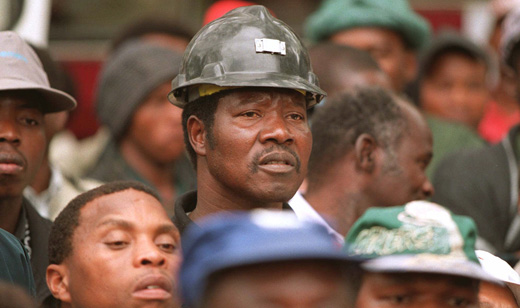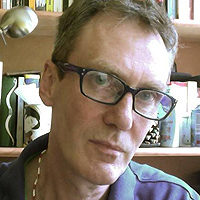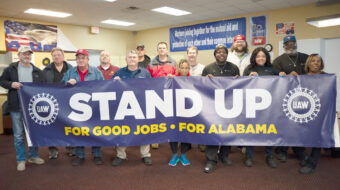
JOHANNESBURG-The shooting of 34 mineworkers by police at the Lonmin platinum mine, in Marikana, North-West Province, marks a bloody setback to South Africa’s fragile social reconstruction 18 years after the fall of white minority rule.
Much of the mass media in the country and internationally have painted the crisis that led to the massacre as a “turf war” between rival trade unions scrabbling for control over a pliant workforce.
More astute analysis by some news media, research institutes and from within the Tripartite Alliance (comprising the African National Congress, the Congress of South African Trade Unions, and the South African Communist Party) highlights the appalling situation of South Africa’s mining communities as being fertile ground for the crisis that has developed at Marikana.
A new study of communities in the platinum minefields by the Bench Marks Foundation, a Johannesburg-based organization that monitors corporate social responsibility – released coincidentally during the week of the massacre at Marikana – details much of the context of the tragedy.
It paints a picture of how all the major platinum mining corporations have made billions of dollars out the world’s richest platinum deposits in the Bonjanala District of North-West Province, while leaving a trail of misery death, poverty, illness and environmental pollution in the surrounding communities.
The report finds that Lonmin’s operations at Marikana “include high levels of fatalities” and that residential conditions under which Lonmin employees live are “appalling.”
The report also attributes the high levels of deaths of miners at work to the use of cheaper sub-contracted labor that is “usually poorly paid, poorly trained and educated, and poorly accommodated.”
The use of such labor, brought in from outside Marikana, was also an attempt, the report explains, to “break the power of the NUM (National Union of Mine Workers)” and to undercut the collective bargaining rights that the NUM had built up over decades of struggle.
Furthermore, the report notes that the expanded use of sub-contracted laborers from other localities, including from the Eastern Cape, has created community tensions.
The volatile atmosphere has played into the hands of the Association of Mining and Construction Union (AMCU), set up with the blessing of mining company owners, and led by Joseph Mathunjwa, who was expelled by the NUM in 1998 for divisive and anarchic agitation.
He helped establish the AMCU two years ago to undermine the NUM. As the SACP has pointed out, the new union receives support from the multinational minerals corporation BHP Billiton.
AMCU has tried to attract support by promising that it can deliver far higher pay agreements than the NUM can manage, and has been responsible for a spate of violent confrontations against NUM members.
Last year the violence associated with AMCU spread to the Rustenburg platinum mines, of which Lonmin is one. This was when the management of Impala Platinum deliberately undercut collective bargaining agreements reached with NUM by opportunistically seeking to attract, with higher wages, mineworkers from other companies.
The situation that nurtured a grievance among the less-skilled rock-drillers, which was exploited by AMCU, and ultimately led to the dismissal of thousands of workers.
For a number of months at Marikana, the AMCU leadership has been once again exploiting the credulity and desperation of the most marginalized sectors of the Lonmin work force, the contracted-workers. The union has promised them a pay hike from R4 000 to R12 5000.
The resulting strike and stand off between workers and police became increasingly violent, culminating in the mass shooting of strikers on 16 August. The strikers had been persuaded by AMCU members that if they used a traditional medicinal plant, intelezi, used to ward off evil spirits, they would evade police bullets.
The police claimed that the workers advanced on them with traditional weapons (pangas, knobkerries and spears) and that some had pistols and had been the first to open fire. The police responded catastrophically with automatic weapons, leaving 34 dead and over 70 injured.
President Zuma cut short his visit to Mozambique to return home visit Marikana, where he met with injured workers in hospital and with their families. He has commissioned an inquiry into the massacre and the crisis that led to it.
While there has been much media criticism of the police heavy-handed tactics against the strikers, the government has yet to offer an explanation of police behavior at the mine.
In a central committee statement, the SACP said that it is impossible to understand the tragedy “without an appreciation of how the major platinum mining corporations have created desperate community poverty, divisive tensions and a fatalistic attitude by workers towards danger and death.”
The party said that the strategy of trying to break the National Union of Mineworkers has now backfired on the profits of the platinum companies.
“It is also not possible to understand the tragedy without understanding how profit-maximizing corporate greed has deliberately sought to undercut an established trade union and collective bargaining by conniving with demagogic forces.”
The crisis and the nature of how it exploded also reflect the deep problems of South African society, where the fatal mix of massive inequality and entrenched brutality are a constant blight on people’s lives.
The Marikana killings come at a time of increasingly precipitous dissatisfaction in working class communities that the root causes of poverty and inequality in the country remain intact so long after the end of apartheid. Though South Africa has a small emerging black middle class, burgeoning inequality mainly continues along apartheid era divisions and fault-lines.
“As a society we need to ask ourselves real questions about what this level of brutality says about our society that is still so unequal, so angry and so willing to respond violently,” said the veteran trade union leader and founder of COSATU Jay Naidoo in a press interview.
Right wing populist former ANC Youth League member, Julius Malema, who was expelled by the ANC earlier this year for sowing division in the movement and bringing it into disrepute, turned up at Marikana a few days after the massacre to address the strikers.
Euphorically, Malema urged them to be ready to die for their cause. He blamed President Zuma for the massacre, saying that he “presided over the killings”. Malema also accused Zuma of only meeting with “whites” when he visited Marikana. “He went to speak to white people, not to you,” he told the strikers.
Photo: In mineral rich South Africa, miners have brought enormous wealth to the surface for huge, multi-national corporations, often without just compensation and under extremely hazardous conditions. Themba Hadebe/AP

MOST POPULAR TODAY

High Court essentially bans demonstrations, freedom of assembly in Deep South

Zionist organizations leading campaign to stop ceasefire resolutions in D.C. area

UN warns that Israel is still blocking humanitarian aid to Gaza


U.S. imperialism’s ‘ironclad’ support for Israel increases fascist danger at home






Comments